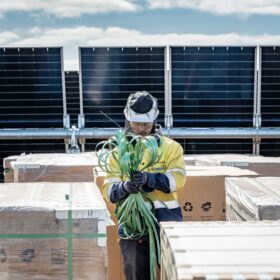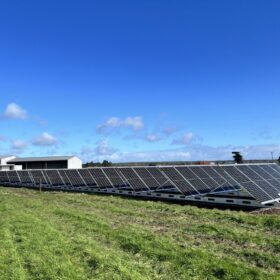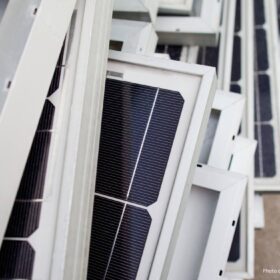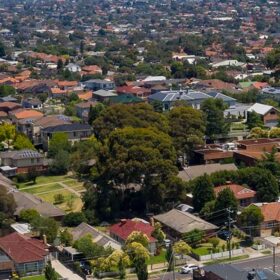Machine-learning models identify hidden physical defects in solar arrays
The software tool uses self-supervised learning to detect long-term defects in solar assets weeks or years before conventional inspections, potentially reducing operations and maintenance costs.
California winery runs all operations on floating and rooftop solar
A family-owned California winery has replaced grid electricity with onsite solar generation, reducing power costs and providing a live test site for floating photovoltaic research.
Polymer film tipped to prevent solar panel corrosion
Engineers in the United States have developed a polymer coating they say could be used to protect PV modules, due to its impermeability to gases. The team has demonstrated that a 60-nanometer-thick film can extend the lifetime of a perovskite crystal by several weeks.
US orders recall of 10,500 Tesla Powerwall 2 battery systems
Tesla says its recall and replacement effort stems from a contained battery-cell defect that has raised safety concerns in both the United States and Australia.
Infravision hires former SpaceX executive as chief technology officer
Australia founded, Texas-headquartered Infravision has appointed former Space X and energy systems engineer Frank Tybor as chief technology officer as the company leverages its recent $139 million Series B led by GIC.
Apple’s 1 million MWh per year target boosted by PPA with European Energy
European Energy has signed a power purchase agreement with United States technology company Apple for electricity supply from the 108 MWdc Lancaster solar park in Victoria, putting Apple on track to achieve 1 million MWh per year generation in Australia.
US study outlines gains and risks in agrivoltaic solar development
A new National Renewable Energy Laboratory (NREL) report says Massachusetts’ solar-on-farmland policy framework offers lessons for developers navigating both opportunity and regulatory complexity.
$139 million Series B raise takes Infravision aerial robotics to new heights
Australian start-up, Infravision, has raised $91 million Series B from investors led by GIC that will help accelerate the global deployment of its power line stringing and automated grid construction technology.
Victorian manufacturer launches solar microgrid system in US
Victoria-based microgrid manufacturer PHNXX has broken into the United States market, teaming with microgrid system and software manufacturer Paired Power to launch a portable solar-powered stand-alone power system that can be installed and generating electricity within a single day.
Australia leads international zero-carbon silicon recovery research
Australian researchers are collaborating with organisations in India, Indonesia and the United States to develop a zero-carbon, automated end-of-life solar panel recycling process using robots to recover ultra-pure silicon.















